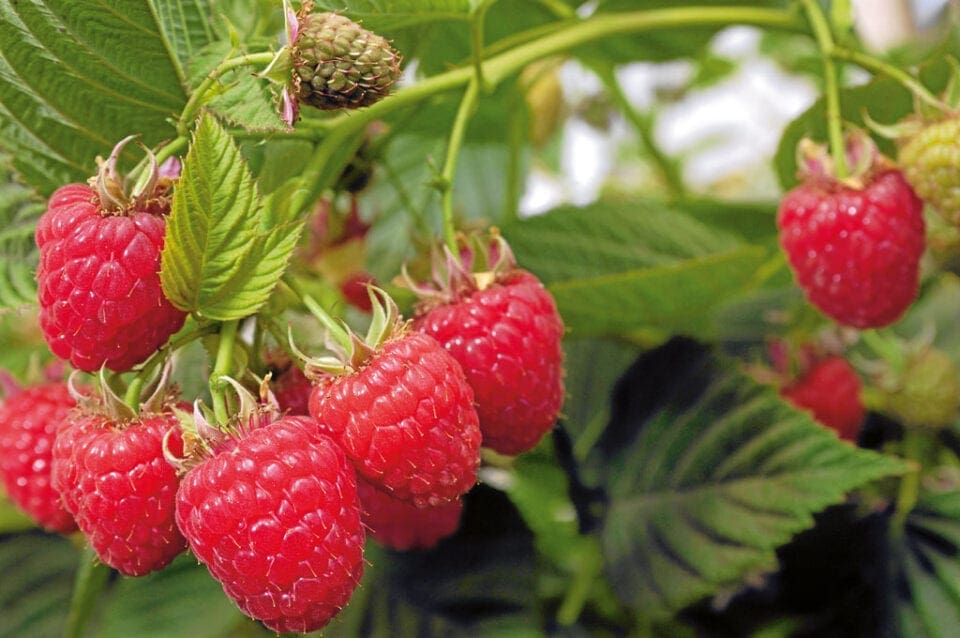Raspberries are a mainstay of the fruit garden and no patch is complete without them. Apart from their great taste and easy-going nature which makes it so easy to grow your own, they are heavy cropping and versatile in the kitchen.
They love moisture and will grow well against a shady wall, but are not good in a very hot, sunny position unless given lots of water and a thick mulch (layer of organic matter) over the roots to cool them.
Raspberries do need plenty of space and strong supports since the canes (stems) of vigorous summer fruiting varieties will grow anything up to 3.6m (12ft) in a season.
However there are ways of training them that reduce the amount of space required and autumn fruiting types are much more compact.
Raspberry Varieties
There are two main groups of raspberries, those that fruit in the summer and those fruiting from August to October. By choosing the right ones it is possible to be picking over a number of months. For example, you could choose:
- ‘Glen Moy’
One of the earliest varieties for July - ‘Glen Ample’
Follows the above in July-August - ‘Octavia’
A great variety for mid-July to late August - ‘Allgold‘
Sweet and yellow-fruited. Crops mid August to mid-October

Sowing & Growing Raspberries
Since raspberry plants will crop for anything up to 15 years before they need replacing it is a good idea to
take time over soil preparation.
Dig in plenty of well-rotted garden compost or manure to help the soil hold water during the summer months and rake in some general fertiliser such as Growmore or pelleted chicken manure about a week prior to planting.
Traditionally posts and wires are used to support the canes, but it is possible to grow raspberries against a wall or fence using trellis or wires held taut with vine eyes.
The wires should be 45cm (18in) apart up the supporting wall, fence or posts and 5-7cm (2-3in) from any supporting wall. Plant the canes (plants) 45cm (18in) apart with 1.5m (5ft) between the rows.
Growing on raspberries
Apply a layer of garden compost or manure (mulch) to the plants every year in March after feeding with a dressing of general fertiliser such as pelleted chicken manure or Growmore. Tie in the canes as they grow to prevent wind damage.
Plants fruit on canes produced in the previous season, while also growing the canes which will fruit next year, so the easiest method is to train the fruiting canes one way and the new canes the other, or to train the new canes directly upwards from the roots and the older fruiting canes pushed to either side and attached to the wire supports.
Pruning raspberries
In the case of summer-fruiting varieties all the fruited wood is cut down to ground level after the fruits have all been picked or as late as the autumn. It will be obvious which are the new soft young canes which can be left intact to fruit next year.
Autumn fruiters are pruned in late winter, about February time, with all the shoots being cut down to ground level. They do not need permanent supports and can simply be kept neat by tying around with a length of string and some canes.
Once the canes have been cut down in late February apply a top dressing of superphosphate or a mulch of garden compost.
Scrumptious recipes for your homegrown raspberries
More on raspberries
More grow guides
For more growing tips and guides, you should subscribe to Kitchen Garden – you’ll receive free seeds with every single issue too!











